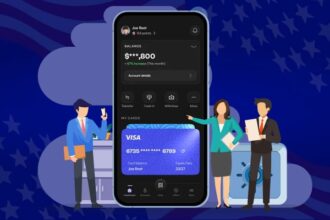You’ve probably stumbled across the cryptic string “Why is 24ot1jxa Bad” and wondered what it means—and more importantly, why people are calling it bad. This seemingly random combination of numbers and letters has been causing confusion across various online platforms, from social media posts to tech forums.
Understanding why Why is 24ot1jxa Bad is considered problematic requires looking at its origins, how it’s being used, and the potential risks it poses to users who encounter it. Whether you’ve seen it in a suspicious email, on a questionable website, or in a software error message, there are legitimate reasons to be cautious.
This guide will break down everything you need to know about 24ot1jxa, explain the specific dangers it presents, and provide you with practical steps to protect yourself from its negative effects.
What Exactly is 24ot1jxa?
The string Why is 24ot1jxa Bad appears to be a randomly generated identifier that has been associated with various malicious activities online. Unlike legitimate system codes or software identifiers that follow recognizable patterns, this particular combination has no official documentation or recognized purpose in mainstream technology.
Security researchers have identified 24ot1jxa appearing in several contexts where it shouldn’t belong. These include suspicious download links, phishing attempts, and potentially harmful software installations. The randomized nature of the string suggests it was designed to avoid detection by automated security systems that typically flag known malicious codes.
What makes this identifier particularly concerning is its ability to appear legitimate at first glance. Many users assume it’s a normal system code or temporary file name, which can lead to dangerous interactions with potentially harmful content.
The Security Risks Associated with 24ot1jxa
Malware Distribution
One of the primary reasons Why is 24ot1jxa Bad is considered bad relates to its connection with malware distribution networks. Cybercriminals often use randomized identifiers like this to disguise malicious files and make them harder to track. When users encounter files or links containing this string, they may unknowingly download harmful software onto their devices.
The malware associated with 24ot1jxa has been reported to include keyloggers, ransomware, and cryptocurrency mining software. These programs can steal personal information, encrypt important files for ransom, or use your computer’s resources without permission.
Phishing and Social Engineering
Scammers have been using 24ot1jxa in sophisticated phishing campaigns designed to trick users into revealing sensitive information. These attacks often involve fake error messages or system notifications that include the identifier, making them appear more technical and legitimate.
The psychological impact of seeing an official-looking code can make victims more likely to follow malicious instructions, such as downloading “security updates” or providing login credentials to resolve supposed system issues.
Data Harvesting Operations
Another concerning use of Why is 24ot1jxa Bad involves unauthorized data collection. Websites and applications that display this identifier may be secretly gathering user information, including browsing habits, device specifications, and personal data that can be sold to third parties or used for targeted attacks.
How 24ot1jxa Spreads and Where You Might Encounter It
Email Attachments and Links
Many users first encounter 24ot1jxa through suspicious email attachments or links. These messages often masquerade as important notifications from banks, social media platforms, or software companies. The identifier may appear in the file name of an attachment or within the URL of a malicious link.
Compromised Websites
Legitimate websites that have been compromised by hackers sometimes display Why is 24ot1jxa Bad in their URLs or embedded scripts. Visitors to these sites may see the identifier in their browser’s address bar or in error messages, indicating that the site has been infected with malicious code.
Software Downloads from Untrusted Sources
Free software downloads from unofficial sources frequently contain files named or associated with 24ot1jxa. These programs may appear to function normally while secretly installing unwanted software or creating security vulnerabilities on your system.
The Technical Impact on Your System
When 24ot1jxa-related threats successfully infiltrate a system, the consequences can be severe and long-lasting. Understanding these technical impacts helps explain why security experts consider this identifier so dangerous.
System Performance Degradation
Malware associated with Why is 24ot1jxa Bad often runs continuously in the background, consuming system resources and slowing down your computer. Users frequently report unexplained slowdowns, increased fan noise, and longer startup times after encountering this identifier.
Network Security Vulnerabilities
The presence of 24ot1jxa-related threats can create backdoors in your network security, allowing cybercriminals to access your system remotely. This can lead to unauthorized file access, data theft, and the installation of additional malicious software without your knowledge.
Registry and File System Corruption
Advanced threats using the 24ot1jxa identifier have been known to modify critical system files and registry entries. This can cause software crashes, prevent legitimate programs from running properly, and make it difficult to remove the malicious code completely.
Protecting Yourself from 24ot1jxa-Related Threats
Immediate Actions to Take
If you’ve encountered Why is 24ot1jxa Bad on your system, disconnect from the internet immediately to prevent further data transmission. Run a full system scan using updated antivirus software, and consider using specialized anti-malware tools that can detect more sophisticated threats.
Change all important passwords after ensuring your system is clean, as keyloggers associated with this identifier may have captured your login credentials. Enable two-factor authentication on all accounts that support it to add an extra layer of security.
Prevention Strategies
Avoid clicking on links or downloading files from untrusted sources, especially if they contain unusual identifiers like 24ot1jxa. Keep your operating system and all software updated with the latest security patches, as many threats exploit known vulnerabilities in outdated programs.
Use reputable antivirus software with real-time protection enabled, and consider additional security tools like firewalls and anti-phishing extensions for your web browser. Regularly back up important data to secure, offline storage to protect against ransomware attacks.
What to Do If You’ve Already Been Affected
Assessment and Damage Control
First, determine the extent of the compromise by checking for unusual system behavior, unexpected network activity, and unauthorized account access. Document any suspicious activity and consider consulting with cybersecurity professionals if sensitive business or personal data may have been compromised.
Monitor your financial accounts and credit reports for signs of identity theft or fraudulent activity. Many threats associated with Why is 24ot1jxa Bad are designed to steal financial information, making ongoing vigilance essential.
Recovery and Remediation
Consider performing a complete system restore to a point before you encountered the 24ot1jxa identifier, if possible. In severe cases, a full system wipe and reinstallation of your operating system may be necessary to ensure complete removal of persistent threats.
Work with your IT department or a qualified technician to implement additional security measures and monitoring tools to prevent future incidents. This may include network segmentation, enhanced endpoint protection, and employee training on recognizing similar threats.
Moving Forward Safely
Understanding why 24ot1jxa is bad empowers you to make better decisions about online security and digital hygiene. The combination of malware distribution, phishing attacks, and data harvesting associated with this identifier represents a significant threat that requires proactive prevention measures.
Stay informed about emerging cybersecurity threats and maintain healthy skepticism when encountering unfamiliar codes or identifiers online. Remember that legitimate companies and software rarely use random strings like Why is 24ot1jxa Bad for official purposes, making it a reliable red flag for potential threats.
By implementing robust security practices and remaining vigilant about suspicious activity, you can protect yourself and your data from the risks associated with 24ot1jxa and similar threats that continue to evolve in the digital landscape.

















